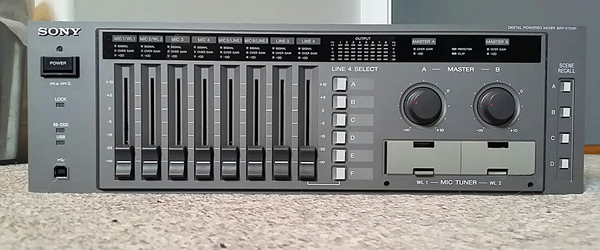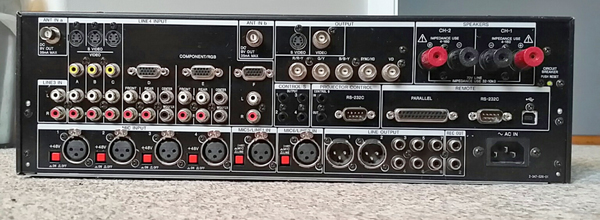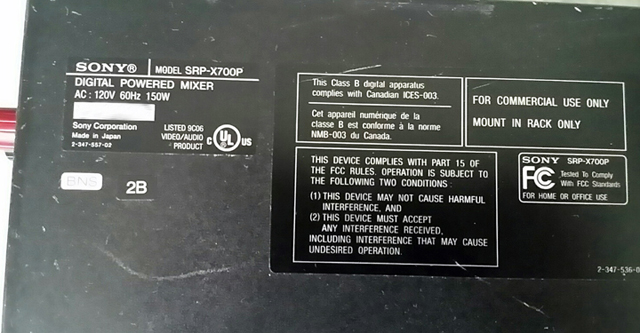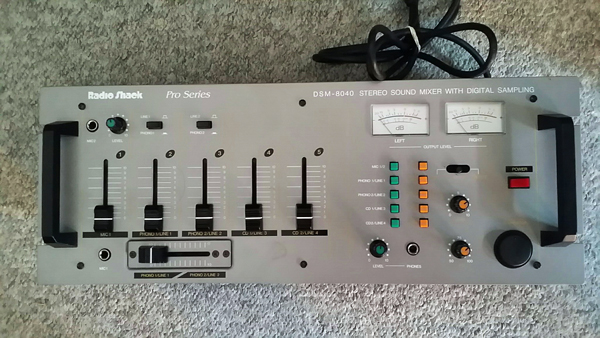Reply 220 of 301, by obobskivich
- Rank
- l33t
wrote:So is it safe to say that PL IIx/IIz receivers do not upmix 5.1 to 7.1 from discrete analog inputs either?
They should upmix from stereo analog inputs and digital inputs; just not discrete multi-channel analog. This is because most receivers/preamps/etc offer those as more or less a bypass input, on the assumption that you're connecting another processor or decoder that will handle its own business.
Indeed. What concerns me more is actually the bass management. My speakers are full-range (well, almost. The 120Tis start to roll at 60Hz), so the sub won't sound if I'm using Aureal 3D sound cards.
Bass management is easy-peasy; just get an active crossover or loudspeaker management system. Take the main L/R into that, and it will spit out L/R for the speakers and a mono sub for the sub (or if you really wanted, it'll just split 2 to 2 and you'll have two subs that just carry <80Hz (or wherever) for each channel).
Wait, I remember reading somewhere that such .2 receivers have options to use the dual sub output channel: when playing movies (or other discrete multichannel sources), the dual sub will use the same .1 channel, thus, will sound identical (dual-mono). However, in stereo mode, each sub output channel will act as extension of the front L/R channel (stereo bass).
Some newer receivers may let you blast all the subwoofers for music, sure. I don't know if they're actually processing it internally as separate L/R channels though - what you're describing sounds most likely though, because it's the most half-way solution possible (and sadly that's become par for the course). 🤣
Found none on ebay. I wonder why such external Dolby Digital Live encoder aren't being made anymore. […]
Found none on ebay. I wonder why such external Dolby Digital Live encoder aren't being made anymore.
I wonder if it's possible to create a DIY DDL encoder using chips taken from old nForce motherboard, which is capable to accept up to 7.1 (or even 9.2) discrete analog channel. Too bad I understand jack shit about electronics.
(well, things like RMS and speaker impedance are within my understanding, but electronic circuitry is another thing)
Or alternatively, do DDL encoder chips exist?
Building one yourself, I have no idea. As far as why they aren't made anymore, it's probably a pragmatism thing - modern soundcards can do this internally, so there's no need for an external box. They aren't so worried about odd-ball scenarios like supporting A3D or what-have-you, because that's a small minority of users, and it's easier to just port the software back to older cards (like Audigy) than to build hardware.
Indeed. Would this device work?
No clue - like I said, I've never played around with one of them. 😊
Generally I'll let the 4.0 sound card handle their own DSP, especially those related to Aureal 3D. What I really want are (in or […]
Generally I'll let the 4.0 sound card handle their own DSP, especially those related to Aureal 3D. What I really want are (in order of importance):
(1) bass management.
(2) center channel output that picks the "most centered sound" from front L/R channel. I think it requires receiver's DSP, but as long as I can convert the discrete multichannel analog to S/PDIF, the receiver will handle the rest as long as it's Dolby (instead of DTS).
(3) surround channel output that averages the front and rear-surround input. Again, this requires DSP, but the receiver should be able to handle it (4.0 to 7.1 upmix by DPL IIx) if I can convert the discrete analog to S/PDIF using DDL.
None of this requires DSP - bass management can be accomplished with an external crossover or LMS, and it will probably do a better job than what most receivers do. The center channel can be "synthesized" with a fairly basic passive circuit, as can the surrounds, or you can have a Pro Logic decoder or stand-alone DSP do that (if you don't want to build basic passive stuff).
To do this with a Pro Logic decoder you'd just take L/R into it, and use it to output L/C/R (and potentially LF if it supports that), and then let the surround L/R go their own way. If you had two PL decoders you could run one on the surround L/R in the same way and generate two center channels (one for the front and one for the back); to make that 7.1 you'd just run dual mono for the rear center (which is how 7.1 works for the VAST majority of equipment; discrete is a whole nother bag of worms).
With miniDSP you'd use the center synthesis plugin.
With stand-alone hardware you'd just build a center channel or surround circuit; the Pro Logic decoder will have better separation and whatnot, but it's extra equipment. Look at say this page:
http://kantack.com/surround/surround2.html
Or the PWK center-channel circuit; I have the original as part of a (very big) PDF, but I'm not sure on the easiest way to share it.
Does it have S/PDIF output? Can it be used as DD Live encoder?
It doesn't do anything digital; it's analog in to analog out. It does bass management on those inputs though.
Do such mini DSPs exist?
Yes, the miniDSP is an actual product: http://www.minidsp.com/




